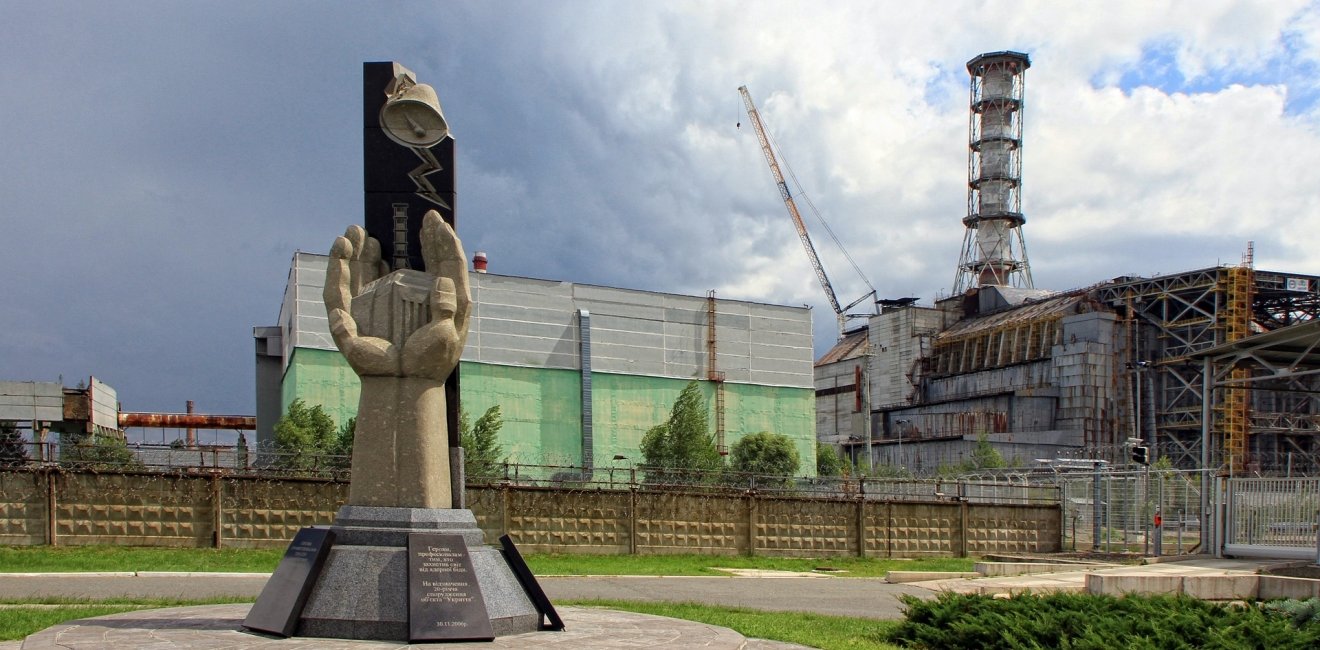
A blog of the Kennan Institute
BY ANDRIAN PROKIP
Nuclear power once had a bright and promising future. But thirty-four years ago this weekend, in 1986, flawed reactor design and operator error resulted in an explosion at the Chernobyl nuclear power plant (NPP), near Ukraine’s border with Belarus (both countries at the time were still part of the Soviet Union, and Soviet authorities’ failure to timely disclose the incident drove up international tensions). According to the World Nuclear Association, the explosion “caused the largest uncontrolled radioactive release into the environment ever recorded for any civilian operation.”
As a consequence, there was a huge change in perception of nuclear power as a source of energy. In 1975 the International Atomic Energy Agency anticipated that nuclear power capacities would rise to between 3,600 and 5,300 GW by 2000. But in 2017 worldwide capacity amounted to only 392 GW, and current forecasts are much more moderate. The Chernobyl disaster made people much more cautious about the uses of nuclear power and less uniform in their acceptance of it as an energy source.
In the pre-Chernobyl era, nuclear power was regarded as an almost inexhaustible and cheap energy source. The economies that suffered the most from the 1973 oil embargo crisis were particularly interested in boosting nuclear power development.
The Chernobyl disaster launched some strong national and international antinuclear movements, which were only strengthened by the 2011 accident at the Fukushima Daiichi NPP. However, the need for cheap energy, especially by energy-dependent Europe, has caused many nations to split over the issue, which becomes especially problematic when neighboring countries disagree.
Western Europe’s Nuclear Need
Since the Chernobyl disaster, the western European nations have divided into two camps, pro- and anti-nuclear energy. Here is a quick rundown of where the major contenders stand.
After Germany’s unification in 1989, no new NPPs were built, and those existing in East Germany were closed. In 2015, more than 80 percent of Germans supported shutting down all NPPs in Germany by 2023.
Italy, a nation that had robust plans for NPP construction, after 1986 rejected all plans. In 2011 Italy banned the use of nuclear power as the result of a referendum.
Austria held a referendum on building an NPP in 1978. The citizens voted against nuclear power; thus the only Austrian NPP has never been put into operation.
After the Chernobyl disaster, Switzerland held a referendum in 1990. The citizens supported a ten-year moratorium on building new NPPs, but the four existing plants continued in operation. In 2017 the Swiss government rejected the construction of new NPPs for the foreseeable future.
However, other western European nations still rely on nuclear power. France gets about three quarters of its electricity from NPPs. The French energy companies are among the global leaders in the nuclear power sector.
Another country in the pro group is Sweden. Sweden detected radiation on its soil before the Soviet officials informed the world about the accident. Nonetheless, the population has shown support for nuclear power, and the government plans to continue using NPPs until it can switch over to renewable sources of energy. Notably, Sweden has dedicated itself to managing responsibly spent nuclear fuel.
Finland has four nuclear power units in operation and plans to construct new NPPs.
Eastern Europe’s Nuclear Conflicts
The eastern European nations are at odds over many issues. Nuclear energy is just one of them.
The Chernobyl accident destroyed the Soviet plan to derive energy from new nuclear and hydro power plants in the European part of the USSR. In 1987–2000, Russia stopped building NPPs. However, in the twenty-first century, Russia resumed the use of nuclear energy and became one of the key global nuclear power developers. Today the Rosatom corporation consists of 360 enterprises and is building NPPs in twelve countries.
Belarus, which saw one-third of its territory polluted by radiation from the Chernobyl reactors, has also returned to the use of NPPs. In 2020 the first Belarusian NPP will come into operation, and an additional nuclear unit is under construction.
These Belarusian policies have been harshly criticized by Lithuania, a nation that closed its NPP (the sole source of 70 percent of its electricity). The Belarusian NPP is very close to the Lithuanian border, which raises concern among Lithuania’s government and population. Even though Belarus was considered as a possible exporter of electricity to the EU, Lithuania’s protest may lead to a refusal to cooperate with the Minsk agreements on this matter.
For a long time, Poland was among the key anti-nuclear-power nations. In the 1990 referendum, 86 percent of citizens voted against the use of nuclear power. But recently the Polish government changed its stance, and Poland is now considering having its own NPP in operation by the early 2030s, since the country’s growing economy needs new sources of energy.
Austria is in a long-term conflict with the Czech Republic and Slovakia over their NPPs. The Czech Republic has six reactors in operation (they were constructed between 1985 and 2003) and is considering building new ones. Slovakia uses four nuclear reactors, which commenced operations between 1984 and 1999. Slovakia had to close two reactors as a condition of joining the EU in 2004, but now its government plans to construct two new NPPs, despite protests from Austria.
Ukraine: Chernobyl’s Biggest Victim
Ukraine suffered considerably from the Chernobyl disaster, which occurred about eighty miles north of the capital city, Kyiv, and two miles from the new city of Pripyat, population about 49,000 at the time. The accident had an impact on Ukraine’s politics, culture, and society but did not stop the Ukrainian nuclear power industry’s development.
Thus, despite ongoing ramifications from the explosion, in 1986–1990 six new reactors were put into operation in Ukrainian NPPs. The accident destroyed four's reactors of the Chernobyl NPP, but three more were still operating; operations at the Chernobyl NPP ceased only in 2000.
In 1990 the Ukrainian Rada voted for a five-year moratorium on expanding nuclear capacities. The moratorium was canceled in 1993, and three more reactors were put into operation during the independence period. Currently, an additional two units are under construction and are expected to be ready by 2025.
The Ukrainian nuclear power sector is among the biggest in the world. Among nuclear power producers, Ukraine is in the top ten globally and the top three in Europe. NPPs play a crucial role in Ukraine’s energy sector and economy, being responsible for more than half the electricity produced in the country.
The Chernobyl disaster had a serious impact on European nuclear power development, which has nonetheless resumed. It may seem paradoxical, but nations located closer to the Chernobyl power plant site seem to be less affected by the memory of the disaster. European countries remain divided over the nuclear power issue, and the radically different stances of the anti-nuclear-power movement and the political elites illustrate one of the key cleavages affecting numerous countries on the Continent. Thirty-four years later, the Chernobyl disaster still casts a long shadow over Europe.
The opinions expressed in this article are those solely of the author and do not reflect the views of the Kennan Institute.
Author

Director, Energy Program, Ukrainian Institute for the Future

Kennan Institute
The Kennan Institute is the premier US center for advanced research on Eurasia and the oldest and largest regional program at the Woodrow Wilson International Center for Scholars. The Kennan Institute is committed to improving American understanding of Russia, Ukraine, Central Asia, the South Caucasus, and the surrounding region through research and exchange. Read more

Explore More in Focus Ukraine
Browse Focus Ukraine
Talking to the Dead to Heal the Living

Ukrainian Issue in Polish Elections


